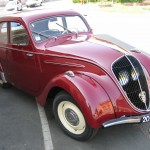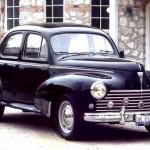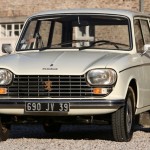Edit: It seems I was ninja’d by Steve…
201, 202, 203, 204, 205, 206, 207, 208, 208, 208, 208. Look like a stuttering kid playing hide and seek? It’s not, it’s Peugeot’s past and future line up in the supermini segment.
In principle it’s no different than with license plates. When carmakers are numbering their consecutive models, there’s inevitably going to be a time when they run out and have to change format. At Peugeot they’ve somehow managed to postpone that for many decades, as their current numbering convention started in 1929, with the Peugeot 201. The three digits, in left-to-right order designate: the size or market segment of the car, nothing because the second digit is always a zero and the model’s generation. The 201 is the first generation in the 200-series, the upcoming 208 is number eight.
The 208 isn’t the only current model that’s approaching the moment of exhaustion of the series, because it’s all sevens and eights in Pug’s portfolio. They even had to come up with a double zero notation to denote MPVs and SUVs (1007, 3008, 5008). And so the French company recently redefined their naming convention to be fit for future.
For new models in growth markets, the numbers will end at ‘1’. The 301 for example is a recently announced model that will be released onto the Turkish market in November and other promising markets subsequently. Everything in the current portfolio that isn’t yet at eight will grow to eight in future models. Anything that is or reaches the holy number eight will stop there: the ‘8’ will live on. Following the 208 will be the 208, after which the 208 will hit the market, which will be succeeded by the 208, … you get the point.
Maybe Peugeot can look to BMW and use a separate letter-number code to distinguish between model generations. Has its own issues though, I wrote about that earlier.








